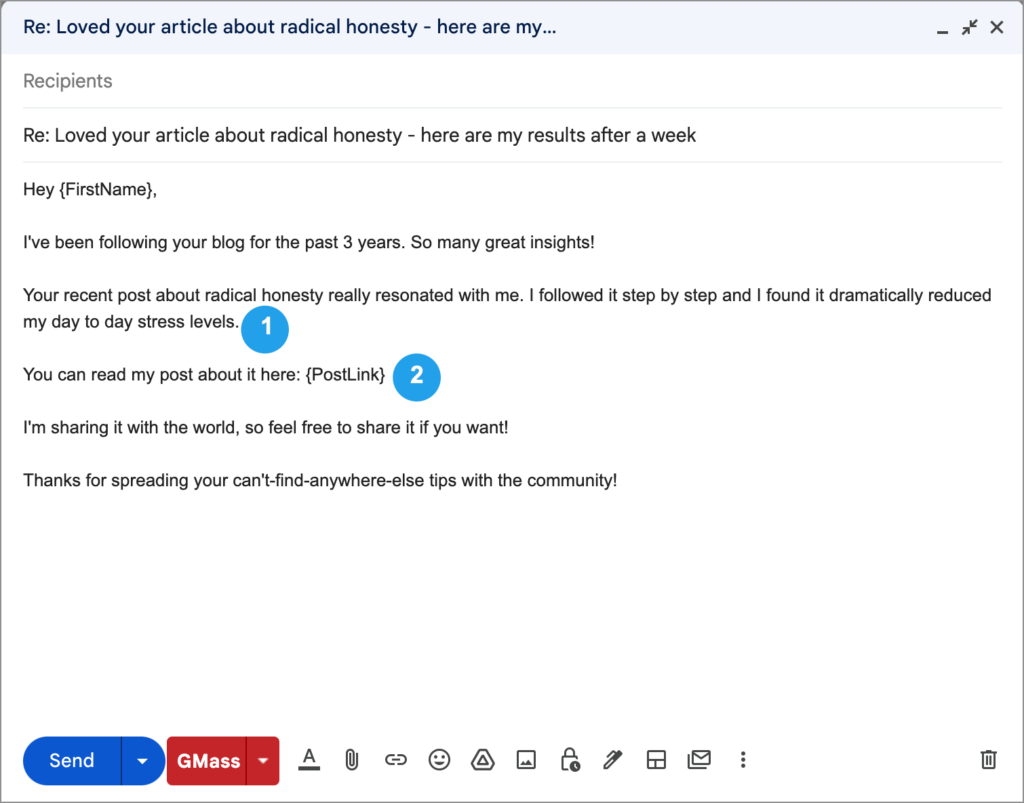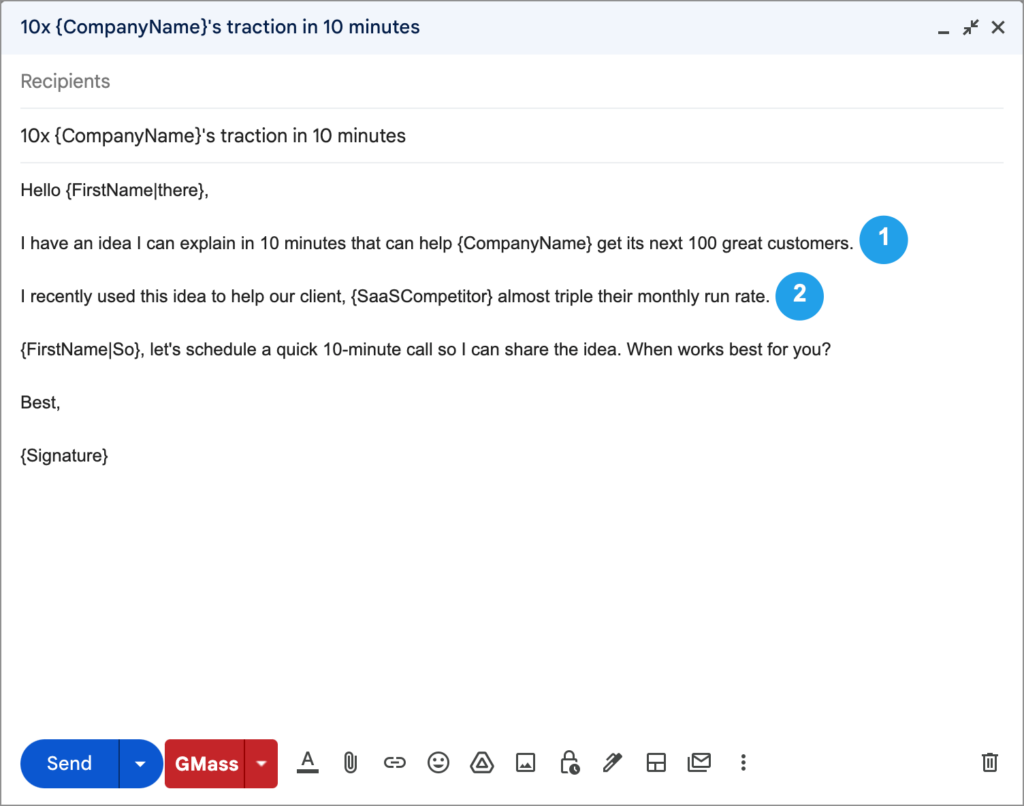Cold Emailing 101: How To Cold Email Prospects Like A Pro
- December 8, 2022
- Lead Generation, Outbound Sales, Sales
Have you seen my blogs or content and I have been hammering on about cold emailing? Because I love cold emails!
I love cold emails that can make an impact and make a prospect want to engage with me. It is what really gets me going in sales!
What is a Cold Email?
Cold email is any email sent to a potential client, potential customer, or other business contact with whom you don’t have an existing connection.
Here’s a simple way to think about it:
If you find a publicly-available email address for someone you’ve never met and send them a message, it’s cold email. Or …
If you email an influencer you’ve never met asking for feedback on an article, it’s cold email. Or …
If you and your sales team use a tool to find email addresses for your target customers and send personalized pitches introducing yourself, your product or service, and the value it would provide, it’s cold email.
Successful cold emails should include:
- Your real name.
- Contact info they could use to look you up: job title, website, social media profiles, phone number, physical address.
- Personalized, relevant content for the recipient.
- A specific request.
Good cold email outreach also:
- Is usually sent from one small business to another, or from one individual to a public figure (e.g, sales managers, journalists, influencers).
- Doesn’t always have a commercial motive, though in most cases it will be a sales email. You can send in an effort to establish a relationship.
Cold email is a one-on-one, personal conversation. That separates them from pure marketing emails, which are sent to large groups (and everyone knows it).
It’s like a cold call, but less intrusive and annoying.
Ultimately, cold email marketing is like sending an email to a business acquaintance, except the recipient doesn’t know you.
Is Cold Email Spam?
Here’s one of the most common questions I get from students:
“How is cold email different from spam?”
Cold email and spam are not the same thing — not even close.
Here’s why…
Spam:
- Often uses a fake name, fake email address, or other sketchy details
- Doesn’t include real contact information
- Is deceptive, saying anything to get you to open the email and take action
- Isn’t targeted (the same email is sent indiscriminately to a large list of people)
- Isn’t meant to start a conversation; rather, it’s usually aiming for a direct purchase (or something more nefarious)
- Has a pure commercial motive
- Gets filtered out by a spam filter almost automatically
For example, a few days ago I received this email:

Can you see all the telltale signs of an email destined for the spam folder?
This email doesn’t address me by name, and it’s not customized.
Did you notice that it doesn’t have a specific request? It’s just a generic, “Let me know if you’re interested.”
Also: There’s no contact information!!!! I have no idea who the senders are, or what they represent …
You can see why a spam filter will filter this out to a spam folder.
But even if it doesn’t wind up in my spam folder, I’m certainly not going to take action based on this email.
With all the SEO experts, firms, and workers out there in the world, am I really going to jump at this impersonal, vague, untrustworthy email? No chance.
Compare that example with another email:

Can you see the difference?
This good cold email does three things:
- It addresses the recipient directly.
- It has a highly specific and relevant request.
- And it mentions a common contact.
It’s likely to have far better email deliverability and wind up in the inbox, not the spam folder.
The ideal cold email outreach is not trying to push a product or get anyone on the phone for a long conversation.
The real world equivalent of this email would be like saying, “Hi,” to a friend of a friend you bumped into at a conference.
It’s not pushy.
It’s not annoying.
And it’s perfectly reasonable, as long as your call to action isn’t overly aggressive.
For example: “Buy my product!”
Sounds pushy, right?
But if you say: “Let’s get coffee sometime!”
That sounds a lot better.
Want a “sniff test” for spam vs. cold email?
Before you send out a cold outreach email, ask yourself:
Would I be comfortable saying this to someone I met at a conference for the first time?
If the answer is no, then it’s likely spam. If the answer is yes, then it’s a cold email.
Keep in mind that spam is illegal. Send too much spam and you will run afoul of CAN-SPAM laws.
Cold Email vs. Unsolicited Email
And unsolicited email can range from a sales email (like the example above) to a newsletter from a company you’ve never heard of before.
If you don’t want to break the law, you should know:
If you didn’t explicitly gain recipients’ permission to receive marketing emails with an opt-in form, and your email meets the spam criteria above, that email is an unsolicited commercial email (UCE).
Now… technically, cold email outreach is unsolicited as well.
However, if cold emails have…
- appropriate header information
- personalization
- and the offer of a relevant, targeted value proposition
… then, it likely won’t be considered UCE or spam.
Cold Calling Doesn’t Work!
According to PFL, a maker of marketing solutions, cold calling campaigns have a measly 1% success rate.
Given how labor intensive they are, and how many rejections you have to endure to get one “yes,” it’s not a surprise fewer and fewer salespeople are making calls.
Cold emailing is a much more effective way to put yourself in front of prospects and nurture them into customers.
Here’s why cold emailing is a whole new ballgame.
Cold Emailing is Scalable
Sales prospecting takes a lot of time and concerted effort, from researching leads to tracking down their contact info. And then… it’s time to get in touch.
But you can only call one person at one time. With email, you can use outreach automation tools to create automated cold email sequences and nurture hundreds of prospects at once.
The other limit of cold calling is that you have to catch a decision-maker at the right time. They rarely return voicemails.
With email, you can stay on the first page of your prospect’s inbox for at least three to five hours, increasing your chance of getting noticed and opened.
How to send an automated cold email sequence to convert the maximum number of prospects into customers
In an effective cold email drip campaign or drip sequence, you write four to six emails ahead of time, leaving a few words and phrases to be personalized for each cold prospect, such as their name, where you found them, and what industry they work in.
Remember to write each email based on the potential customer’s perspective!
Be specific about how you can help your cold prospect solve a big problem for them.
You may already know this, but it’s easy to get stuck inside your own perspective as soon as you start typing.
For example, if you say, “My tool can help you rapidly build a targeted leads list.”
Then, you’re describing a feature instead of a benefit, and it’s from your perspective.
But, if you say, for example:
“Never worry about running out of new sales opportunities …”
Then, you’re describing specific benefits and how it can solve problems from your customer’s perspective.
Using an outreach automation tool like Lemlist (my personal tool of choice), you can connect to a Google Sheet of contacts, add emails in your sequence, and set up a schedule to send them.
It’s much easier to find (and guess) emails than phone numbers
Many companies do not publicly list the direct phone numbers of their employees. So it’s an uphill battle to convince gatekeepers to connect you.
With email, since most companies use predictable naming format like [email protected] or [email protected], there are many tools that can “automagically” provide you a list of email addresses based on first and last names and the company they work for including:
There are three sales prospecting and outreach tools I like to use constantly. The way it works is that I input the URL of the company and the name of the prospect and the tool gives me their email address.
- Snov.io is my favorite for this since they also have an API which allows me to get contacts at scale.
- GMass – In my humble opinion, GMass is the best tool to put your email outreach on autopilot and actually get results by turning cold prospects into warm leads.
- AeroLeads –lets you add relevant people you find on LinkedIn to your leads list and finds their emails for you

If email searching software is giving you trouble, you can always try Googling “@company.com email”.
This sometimes turns up the email addresses of company employees published on a page and shows how their emails are formatted, so you can reliably guess the email of the person you want to reach at that company, if you know their name.
Example:


Based on that result, we can see that Salesforce formats their employee emails as:
Now that you have your prospects and your cold email tool, it’s time to send your messages.
Use a Hook in a Cold Email
There’s nothing influencers and writers love more than knowing how their strategies and tactics have helped others.
Share your results with them, and they’ll be happy to spread it to their fans and followers.
It establishes a great connection and it gets them great press!
Here’s a simple template:

- Mentions the recent post, states how you’ve been following it, and how it has affected your life.
- A link to the post, along with a subtle suggestion that the influencer can share it with their target audience.
What you can learn from it
If you’ve ever followed any influencer’s advice, share your results with them.
It’s one of the best hooks for building a relationship with them.
Nail a Sales Call Cold Email
If you’re in B2B sales (say you’re a salesperson or a sales manager) or you’re one of many B2B marketers at your company — you’ll have to make dozens of calls every day.
This example sets you up for more yays than nays:

- It asks for just 10 minutes. That’s good enough for most busy people. And what company wouldn’t want 100 more great customers?
- It name drops a close competitor or industry leader, and shows the results they got from working with the sender.
- It’s a very simple three-line email, but if someone credibly promised to get you 100 more customers and asked for just 10 minutes of your time, wouldn’t you be interested too?
What you can learn from it
Tell prospects exactly what kind of results they can expect. Then…
Tell them how long you’ll take to achieve it!

Cold Email Subject Lines That Work
I included subject lines in the examples above, but here’s an even deeper look into that ever-important element of cold email outreach.
Subject line should entice your prospects to open your email. The holy trinity of a good subject line:
- short (8-10 words max)
- use a casual tone (prospects do not want to read an email that sounds like it came from their lawyer)
- not deceptive (if they feel you tricked them into opening, they won’t respond, and it sullies your company’s reputation)
Here are a few high performing subject line formulas to use as a reference
For initial introduction emails
- [Colleague] recommended I get in touch. If you use the “appropriate person” email template shown above, you can mention the name of the colleague who referred you in your subject line.
- A few ideas [to resolve their biggest pain point related to your product]
- 10x [prospect company]’s [area they would want to grow – example: sales, user retention]
- I found you through [Name]. To be able to use this subject line, see what mutual connections you share with this prospect on LinkedIn and mention one of them in the title.
- Congratulations on [recent good event that happened to their company]
- Been following you on [site where they publish content] and wanted to reach out
- Are you the right person to speak with?
- Saw you use [complimentary product] – you may find this interesting
- A new [area that your product is in] strategy for [Company]
For follow up emails
- My brain is an open book for you
- Should I stay or should I go?
- Can you blame me for swinging for the fences 🙂
- Re: subject line of your first email. Only do this for one of your follow-ups.
- Saw that [event relevant to their industry/company or something the prospect recently did]
The Serial Seller Wrap-Up
I cannot explain to you how much I love cold emailing.
For me it is exciting. Being able to set up targeted campaigns for prospects who I know are my target clients. Once I have the right people, I am able to automate 80% of my outbound email campaigns by using Lemlist.
I can then track;
- Open Rates
- Click Rates
- Reply Rates
I can change, edit or swap the images, text, titles and more to continuously improve on my results when sending out emails.
Cold emails give me the opportunity to not only book in meetings for sales calls but also drive traffic to my website for brand awareness and retargeting ads later down the track.
If you want help with cold emailing, Book A Call With Us Now!
About us and this blog
We are a Full-Service Sales & Marketing provider that aims to help small to medium businesses increase their leads and sales while helping remove the business owners from their day-to-day activities so they can focus more on the long-term goals of their business.
Book a Meeting with us!
We offer Done-For-You Sales, Sales Coaching, and Advisory as well as Digital Marketing Services. If you want to increase the leads generated for your business and need some guidance and accountability, book a call with us now.


Pingback: How to Develop Effective Lead Generation Strategies